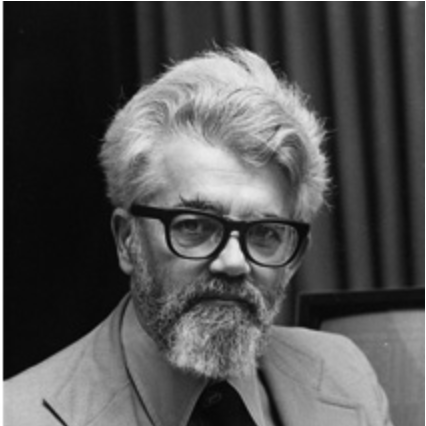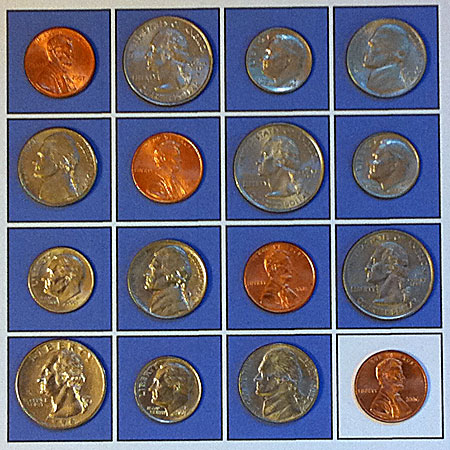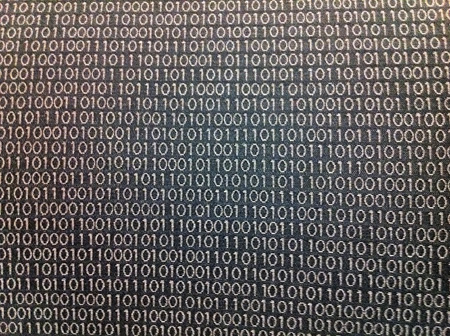arXival Mysteries
by Brian Hayes
Published 2 July 2008
Catching up on new submissions to the arXiv, I came across a paper by Robert Baillie, “Summing the Curious Series of Kempner and Irwin,” which is item 0806.4410 in the mathematics listings. Here’s the abstract, exactly as it appears at http://lanl.arxiv.org/abs/0806.4410v1:
In 1914, Kempner proved that the series 1/1 + 1/2 + … + 1/8 + 1/10 + 1/11 +… + 1/18 + 1/20 + 1/21 + …, where the denominators are the positive integers that do not contain the digit 9, converges to a sum less than 90. (The actual sum is about 22.92068.) In 1916, Irwin proved that the sum of 1/n where n has at most a finite number of 9′s is also a convergent series. We show how to compute sums of Irwins’ series to high precision. For example, the sum of the series 1/9 + 1/19 + 1/29 + 1/39+ 1/49 + … where the denominators have exactly one 9, is about 23.04428708074784831968. Note that this is larger than the sum of Kempner’s “no 9″ series. We also show how to construct nontrivial subseries of the harmonic series that have arbitrarily large, but computable, sums. For example, the sum of 1/n where n has at most 434 occurrences of the digit 0 is about 10016.32364577640186109739.
Baillie’s article is full of really interesting mathematics and algorithmics, which ought to be reason enough to mention the paper here. But it was something stranger that caught my attention. Look closely at the large number in the last line of the abstract. The HTML source of the arXiv page looks like this:
1<a href="abs/0016.3236">0016.3236</a>4577640186109739.
It seems the sequence 0016.3236, embedded in a larger string of digits, has been interpreted as an arXiv identifier. I can only guess that some program at arXiv.org is scanning abstracts looking for strings of the form nnnn.nnnn, where n is any decimal digit. It’s a little like those rogue search-and-replace scripts that do amusing things like turning every “gay” into a “homosexual.”
As it happens, there is no arXiv paper with the identifier 0016.3236. There can’t be because the identifier format is actually yymm.nnnn, encoding the year and month of submission in the first four digits. Obviously there is no month 16, and the identifier scheme had not yet been introduced in the year 00. Thus, as far as I know, the competition is still open for the first perfectly self-referential arXiv preprint—one that finds a legitimate reason to embed its own identifier in its abstract. (Part of the challenge is that you can’t know in advance—at least not with high precision—what number will be assigned to a paper when it is submitted.)
[More on the Kempner series: Baillie and Thomas Schmelzer also have an article on related work in the latest American Mathematical Monthly. The article is available (pdf) from Schmelzer's web site.]
Update 2008-09-07: Because this post makes fun of programs that automatically scan and “fix” text, it inevitably suffers that very fate. Although the long quotation above was pasted into my editor window exactly as it appeared in the original arXiv abstract, that’s not how the quotation will arrive on your screen. If you try to follow the link embedded in that long number, you’ll find that the address is not “abs/0016.3236″ but “bit-player.org/2008/abs/0016.3236″. Somewhere in the WordPress software is a routine that “corrects” any URL lacking a top-level domain. I have resisted the urge to correct the correction. I note that arXiv is following the same policy: The latest version of the Baillie abstract (posted 17 August) still includes the curious embedded link.
Update 2009-07-31: In the 2008-09-07 update I unjustly impugned WordPress. It is not WordPress that is munging the URL; it is my very own browser (and probably yours too). A URL without a fully qualified domain name is interpreted by the browser as a link relative to the current site. Viewing the page source shows that the “abs/0016.3236″ is not changed within the HTML. Many thanks to Keith Beckman for setting me straight on this.
Responses from readers:
Please note: The bit-player website is no longer equipped to accept and publish comments from readers, but the author is still eager to hear from you. Send comments, criticism, compliments, or corrections to brian@bit-player.org.
Publication history
First publication: 2 July 2008
Converted to Eleventy framework: 22 April 2025




Could you submit a dummy paper, obtain its reference number, and then update the paper in such a way that it incorportates the number? If you had a magic formula that, given a string of digits, produced a description of the form “the sum of 1/n where n has at most k occurrences of the digit d” that contained those digits, you’d be all set…
My college analysis prof gave this series as an example. When you look at the first few dozen terms after removing from the harmonic series the terms having a 9 in them, it doesn’t seem like you’re omitting enough terms to bring the series into convergence.
When he began to explain why the series unintuitively converges, he opened with “Most integers have more than a billion digits” which was at the same time entertaining and illuminating.
In his book “Gamma: Exploring Euler’s Constant” Julian Havil devotes a few pages to the Kempner series. The book is worth checking out if you’re interested in the harmonic — and related — series.
to respond to craid kaplan… for kempner series: given a sum T, one can use trial and error to find a set (say, S) of digit strings such that the kempner sum of 1/n where n has no digits in S, is near T. i don’t know if that’s possible for irwin series, since it is not yet known how to compute the sum of 1/n where n has, say, one occurrence of a multi-digit string like “314″.
here’s another interesting point. let K = sum of kempner’s “no 9″ series:
K = 1/1 + 1/2 + … + 1/8 + 1/10 + … ~ 22.92067…
let I1 = sum of 1/n where n has one 9:
I1 = 1/9 + 1/19 + 1/29 + … .
the abstract says that I1 > K, even though the I1 series starts out being much smaller than the K series. but that’s also true for I2 = sum of 1/n where n has 2 nines:
I2 = 1/99 + 1/199 + 1/299 + … + 1/899 + 1/909 + … ~ 23.02604… > K.
the same is true for, say, 10 nines:
I10 = 1/9999999999 + 1/19999999999 + … ~ 23.02585092994045684022 > K.
the paper doesn’t prove that the sum is > K for an arbitrary number of nines, but the computational results suggest that for a large number of nines, the sum is close to 10*ln(10) ~ 23.02585092994045684018 .
The Baillie and Thomas Schmelzer article point to Nick Trefethen’s TEN DIGIT ALGORITHMS - “Ten digits, five seconds, and just one page”
http://www.comlab.ox.ac.uk/nick.trefethen/tda.html
The algorithms might make a fun book.